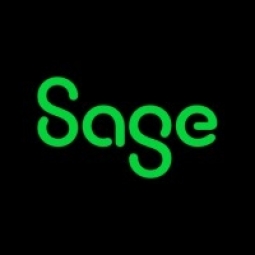Download PDF
Navtrak Charts a Better Course With Sage 500 ERP
Technology Category
- Functional Applications - Enterprise Resource Planning Systems (ERP)
Applicable Industries
- Electronics
Applicable Functions
- Discrete Manufacturing
Use Cases
- Inventory Management
- Manufacturing System Automation
Services
- System Integration
The Challenge
Navtrak, a manufacturer of global positioning system (GPS) equipment, was facing challenges with its QuickBooks financial software. The software was not providing an adequate audit trail, the ability to perform analysis, or deep inventory tracking. It also allowed people to delete transactions when they shouldn't, leaving the company with little management control. Navtrak needed a solution that could provide better financial management, inventory tracking, and overall control of the business operations.
About The Customer
Navtrak, Inc. is a company that manufactures global positioning system (GPS) equipment for businesses. The company is based in Salisbury, Maryland and operates in five different locations. Navtrak has a total of 65 employees. The company's GPS equipment is used by businesses to track vehicles in an accurate and timely manner. Navtrak's primary customers are fleets in the trucking, ambulance, waste disposal, and utility industries.
The Solution
Navtrak decided to implement Sage 500 ERP, a business management software, to address its challenges. The software was chosen for its superior integration capabilities with Navtrak's administrative database and CRM, and its user-friendly interface. Sage 500 ERP now handles almost everything from a financial standpoint for Navtrak, including all general accounting functions, plus inventory and manufacturing management. The system pulls parts according to customer order, stages and processes production, and even manages orders through shipping.
Operational Impact
Quantitative Benefit
Related Case Studies.

Case Study
Remote Temperature Monitoring of Perishable Goods Saves Money
RMONI was facing temperature monitoring challenges in a cold chain business. A cold chain must be established and maintained to ensure goods have been properly refrigerated during every step of the process, making temperature monitoring a critical business function. Manual registration practice can be very costly, labor intensive and prone to mistakes.

Case Study
Cloud Solution for Energy Management Platform-Schneider Electric
Schneider Electric required a cloud solution for its energy management platform to manage high computational operations, which were essential for catering to client requirements. As the business involves storage and analysis of huge amounts of data, the company also needed a convenient and scalable storage solution to facilitate operations efficiently.

Case Study
Leveraging the IoT to Gain a Competitive Edge in International Competition
Many large manufacturers in and outside Japan are competing for larger market share in the same space, expecting a growing demand for projectors in the areas of entertainment, which requires glamor and strong visual performance as well as digital signage that can attract people’s attention. “It is becoming more and more difficult to differentiate ourselves with stand-alone hardware products,” says Kazuyuki Kitagawa, Director of Service & Support at Panasonic AVC Networks. “In order for Panasonic to grow market share and overall business, it is essential for us to develop solutions that deliver significant added value.” Panasonic believes projection failure and quality deterioration should never happen. This is what and has driven them to make their projectors IoT-enabled. More specifically, Panasonic has developed a system that collects data from projectors, visualizes detailed operational statuses, and predicts issues and address them before failure occurs. Their projectors are embedded with a variety of sensors that measure power supply, voltage, video input/ output signals, intake/exhaust air temperatures, cooling fan operations, and light bulb operating time. These sensors have been used to make the projector more intelligent, automatically suspending operation when the temperature rises excessively, and automatically switching light bulbs. Although this was a great first step, Panasonic projectors were still not equipped with any capability to send the data over a network.








